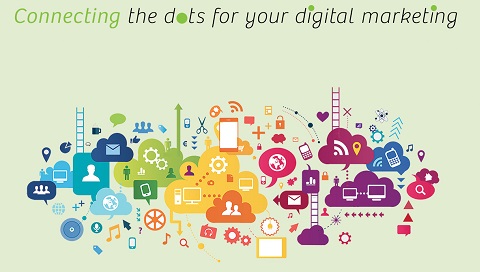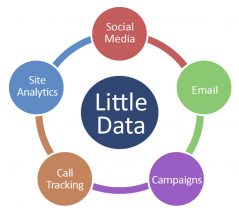Recently we have been using the phrase “helping businesses connect the dots” to their digital marketing. If you haven’t heard one of us talk about it, read on.
Many small and medium-sized business owners know they need to do something with digital marketing. At a minimum, they need a website. At best they have both inbound and outbound marketing strategies and processes that are driving traffic to their website and are converting them or drawing them deeper into the sales funnel.
But where do you start? The first dot to connect is understanding how your website fits into your overall marketing effort. Do sales actually take place on the site? Is the goal to get visitors to call? Would an interactive chat help close the deal? Can a well-placed, concise form capture enough information for someone in sales to contact the visitor? All of these questions (and a whole lot more) help to connect the first two dots and without connecting them, you’ll be left with an incomplete picture.
Once you have that connection, you can proceed to build a web site that facilitates that marketing (and perhaps sales) effort. Then it is time to connect the rest of the dots. Once the web site does what you want it to, how do you get people there? Will you be doing content marketing? Do you a customer base where email marketing makes sense? Should you be running search campaigns? If so, should you be focusing on organic search or on paid search (or both)?
And of course, you’ll want to consider how and where social media marketing fits with everything. For B2C you’ll want to carefully consider Facebook and Instagram. For B2B you’ll want to consider LinkedIn. But that is just three of hundreds of options. If you have or are creating videos, you’ll want to look into YouTube or Vimeo or Rumble or any of the other video options. If you are trying to reach a market that is always in the “now” you will want to see if Twitter is a good option.
So that is an overview of what we mean by helping businesses to connect the dots. We’ve laid out just a few of the numerous things that might be a good fit for you. If you want a customized plan for your business, give us a call at 303-268-2245. Not sure who to talk to? Try Brian at extension 4.







 But as a part of our marketing assistance, we seek to understand the goals of the SEO program. On a few occasions the customer’s goal has not been to get a higher ranking with the search engines. Those conversations go something like this:
But as a part of our marketing assistance, we seek to understand the goals of the SEO program. On a few occasions the customer’s goal has not been to get a higher ranking with the search engines. Those conversations go something like this:

 big as Facebook or have as many visitors as Amazon or Walmart but there is still an incredible amount of data that is available from your slice of the Internet. So how can you turn little data into a big benefit?
big as Facebook or have as many visitors as Amazon or Walmart but there is still an incredible amount of data that is available from your slice of the Internet. So how can you turn little data into a big benefit?